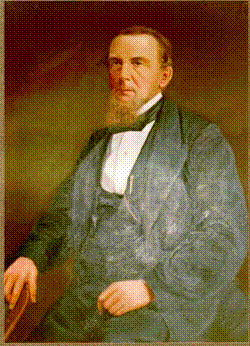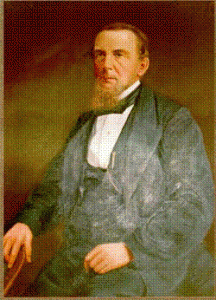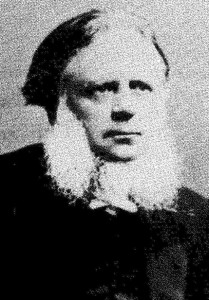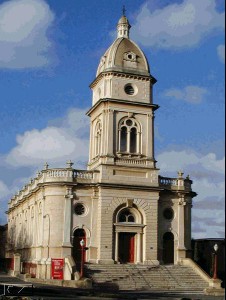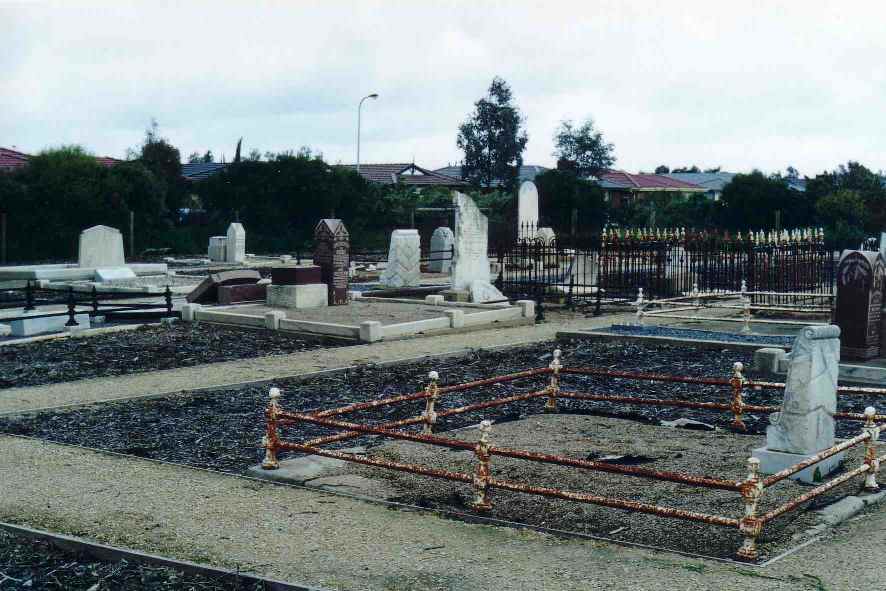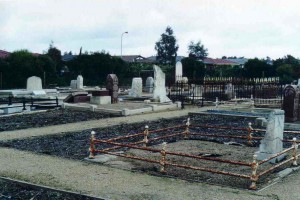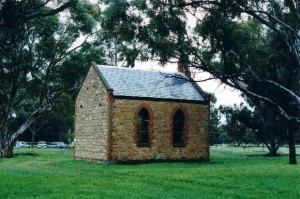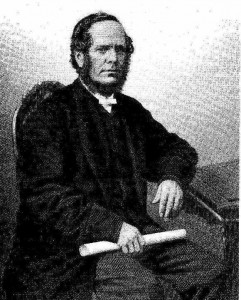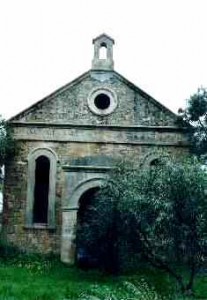INTRODUCTION
South Australia led the nation in enacting an Associations Incorporation Act which enabled not-for-profit organisations to gain the benefits of becoming a ‘body corporate” with the liability of the members of the Board being limited to the assets held by the organization.
Prior to that time the options available to charitable, religious and educational bodies were to obtain a private Act of Parliament (as was done in the case of Prince Alfred College). to create a limited company or to form a trust.
Incorporation was widely used in the welfare and educational work of the Methodist Church to establish major projects. By this means the “risk taking” involved did not place an impossible burden on Board Members.
ESTABLISHING AN INCORPORATED BODY
For many years the legal requirements for incorporation were not onerous. The basic requirements were to prepare Articles of Association and register them with the appropriate Government authority for the payment of a nominal fee.
The initiative in establishing an incorporated body could be taken by a group of interested individuals e.g. a sporting club. Alternatively, a “parent” body could take the necessary steps. This was done by bodies such as the Methodist Conference. By proceeding in this way the Conference was able to ensure some measure of control through the appointment of Board Members and by requiring regular Reports and financial statements. At the same time, the incorporated body enjoyed a high degree of autonomy and presented a distinctive image to the community.
Although the parent body’s power to effect major changes to a Board’s policies and programs was rarely used, it remained a powerful tool. On one occasion, the Methodist Conference became so dissatisfied with the working of the Memorial Hospital Board, that it decided to terminate the appointment of its Board members and replace them with a new Board.
Each body that was incorporated under the legislation was required to keep a separate bank account and have their accounts audited. Members of the Board were usually appointed for three year terms with one third retiring each year and being eligible for re-appointment.
The legislation has been amended several times, with significant changes taking place since 1985. Some provisions have been expanded for the purposes of clarity while others have added to the burden of accountability.
THE GROWTH OF INCORPORATED INSTITUTIONS
Some incorporated bodies have become major institutions and hold substantial assets.
The Adelaide Central Methodist Mission was one of the earlier organisations to take advantage of the legislation. As its work expanded and new ventures undertaken, the Board found it prudent to establish several additional ‘bodies corporate”. This occurred during the Depression with the establishment of Kuitpo Colony for the rehabilitation of alcoholics and homeless men.
Separate incorporation of the new entity allowed the body to establish an identity, separate from the Mission. In this way the assets of the “parent body” were quarantined, while it continued to influence the direction of the fledgling organisation through representatives of the parent body on its Board. Meanwhile, the Conference maintained its overall oversight through the submission of regular reports and continued to appoint the Board, without becoming legally responsible for its actions.
The creation of separate incorporated bodies with their own Boards gave opportunity for the involvement of people from the church and community with specialised skills and who were committed to the body’s specific objectives. The combination of a separate identity and the participation of prominent people on the Board greatly assisted the public image of these organisations and helped with fund raising and community support generally.
CORPORATE GOVERNANCE AND DUTY OF CARE
For many years, membership of the Board of an incorporated body was not an onerous responsibility. Only when the National Safety Council of Australia become embroiled in a financial crisis, did it become obvious that the position of Chairman of a “not-for-profit” Board was no sinecure. In that case, litigation initiated by the Commonwealth Bank resulted in the Chairman being bankrupted because of his failure to exercise due care in carrying out his responsibilities. From that time, issues of corporate governance have sent shivers up the spine of board members.
The procedure for appointment and continuation of Board members always constituted a potential weakness in the long-term effectiveness of an organisation. The initiative for nominating board members usually rested with the board, with the actual appointment being made by the parent body or the annual meeting of the “members” of the association. On occasions this has resulted in the “self perpetuation” of particular policies or perspectives. The role of the Methodist Conference in appointing/re-appointing boards, provided a possibility to inject “new blood” by means of nominations from the floor. However, generally nominations were “rubber-stamped”. In later years steps have been taken to limit the total period of service and to introduce a compulsory retirement age which has corrected some of these problems.
Incorporated associations have been an important element in the voluntary sector. Their boards have been volunteers, regardless of their professional qualifications or business expertise. With the increased emphasis on corporate governance, board members have found themselves subject to complex and very demanding regulations for which they may have had little preparation. The Act does not prohibit the payment of sitting fees to board members but very few associations in South Australia make such payments.
Several of the Uniting Church incorporated bodies employ hundreds of staff and control annual budgets in excess of $20,000,000. They are among the “top 50” not-for-profit organisations in Australia and are among the largest employers in this State. Legislative pressures may well push such associations towards the appointment of professionally trained boards whose members are compensated for their services. The same pressures have implications for the way board members are appointed and the kind of people who are nominated for appointment. Ensuring a balance between high standards of corporate governance and management practices while adhering to the values of the Uniting Church may well become the subject of worthwhile debate.
APPLICATION TO LOCAL CONGREGATIONS
Creating a body corporate under the Associations Incorporation’s Act had particular value whenever a local congregation decided to become a “central mission”. In such cases, the local property which was a crucial asset for the emerging mission was controlled by trustees appointed for life under the “Methodist Model Deed”. Trustees at times lacked vision and their ideas were far removed from the plans conceived by the charismatic ministers who pioneered South Australia’s central missions.
When Rev. Arthur Strange took up his appointment at the Archer Street Church in North Adelaide, the congregation had dwindled in size and the trustees were few in number and elderly. Nor was there much scope for injecting forward thinking people by way of new trustees. At that time the trustees held not just the Archer Street Church but also the former Wellington Square Church (now a TV Studio) with a small group of adjoining cottages together with the Archer Street manse on a double block, just off of Le Fevre Terrace.
While some new initiatives at North Adelaide occurred under the existing Trust system, incorporation opened up a new world of possibilities. When established, the board included new people from outside of the local congregation, such as Sir Shirley Jeffries and Mr. Gordon Brown, who were influential lay leaders in the Conference and prominent in the community.
The advantages of flexibility and autonomy made possible with incorporation are illustrated in the move towards the aged care program at North Adelaide. Strange asked for his Board’s approval to purchase the property known as “Westering” as the first stage of the new venture. At the time, he did not have the purchase price in hand. The Board asked “Will you be able to raise the money?” When he said “Yes”, approval to go ahead was given. And the money was raised!
LAUNCHING NEW INSTITUTIONS
Over the years the Conference found incorporation to be a useful tool whenever it became convinced that a new initiative was required. By this means the Memorial Hospital, Resthaven, Epworth Building and the Book Depot, Lincoln College and Westminster School were all brought into being. In each case very little money was available to seed the new venture, and each involved considerable commercial risks. By means of incorporation, each entity became a legal body corporate, with its own specialised Board drawn from the wider church and community. Having their own legal status enabled these fledgling institutions to deal directly with banks and other commercial groups.
From time to time, incorporated bodies have embarked upon projects which required the borrowing of substantial sums of money. Where the lending body required additional security for a loan, the Standing Committee (or later the Council of Synod) took the step of providing a “letter of comfort”. Those organizations which controlled substantial funds could do almost anything provided there was no major conflict with church values. They also enjoyed the advantage of not having to obtain Conference/Synod approval for building proposals.
The Presbyterian Church used incorporation in the establishment of St. Andrew’s Hospital. Also a number of their local churches were incorporated, while others were vested in the Presbyterian Trusts Corporation, a body set up by Act of Parliament.
Some time prior to the inauguration of the Uniting Church, the Methodist Church had secured the passage of legislation setting up the Methodist Church Property Trust. In place of trustees appointed for life, property committees were appointed for a term and the “inbuilt conservatism” of the trust system was significantly modified.
However this improvement did not solve all the problems faced by emerging “missions” and welfare bodies. The personnel of the property committees was still drawn from local congregations and did not always provide the specialised skills needed to manage innovative projects. For this reason, incorporation continued to be the preferred option.
METHODIST ‘MISSIONS’ AND OTHER WELFARE AGENCIES
One of the last “missions” to be created involved the central church – Pirie Street. This “mother church” of SA Methodism was facing a changing and uncertain future. But decision-making powers regarding its mission were divided between the Quarterly Meeting and the Trust. Through incorporation, one body was charged with responsibility for the formulation of policy and the use of resources. Instead of infrequent meetings once a quarter the new board met monthly. With its new-found autonomy Pirie Street played a key role in the eventual amalgamation with Stow Church into what is today Pilgrim Church. The new structure also facilitated the negotiations and legal steps associated with the compulsory acquisition by the Adelaide City Council of the old church buildings.
It is interesting to note that more than two decades after its inauguration, the Uniting Church has created the possibility for local church government to be in the hands of one Church Council which is then charged with decision-making in pastoral care, finance and property and mission planning.
When the Rose Park Congregational Church was no longer able to maintain its extensive property, a decision was made to hand over the property to the newly created Alexandra Homes Trust Inc. for the purpose of erecting aged care accommodation on the site. In due course adjoining property was acquired and a seven-storey hostel and nursing home built. The Trust subsequently amalgamated with another Congregational aged care organisation to form Eldercare Inc. The Goodwood section of the Presbyterian Dunbar Homes Inc. also became part of the new umbrella body.
A further example of the use of incorporation to facilitate a missional project occurred at another of the historic Methodist churches at Kent Town. The local leadership became convinced that their near-city property was ideally located to establish a congregation-based aged care development. After lengthy debate at local and Conference level, finally Kingsborough Homes Inc was born.
Several ministers played key administrative roles in the early stages of this venture, combining an administrative role with their pastoral responsibilities. In this way, Kent Town Church was able to retain the services of a full-time minister. Later on, Kingsborough Homes became part of the Eldercare operation.
INCORPORATION OF A LOCAL CHURCH
The Congregational Church generally used the Associations Incorporation Act for a different purpose. Aware that the system of local trustees could create problems particularly if retiring or deceased members were not replaced, the Congregationalists expressed their independent spirit by incorporating local congregations. Local deacons managed the property, while their liability was limited to the assets in their hands.
The legislation which brought into existence the Uniting Church Property Trust included a Schedule of Congregational church properties whose incorporation ceased at incorporation and whose property was automatically vested in the new Property Trust. A similar arrangement applied in the case of a handful of incorporated Presbyterian Churches which had opted to join the Uniting Church e.g. Scots Church.
GROWING RESPONSIBILITIES OF BOARD MEMBERS
It should be understood that church organisations are now subject to scores of State and Commonwealth Government legislation and regulation which are additional to the requirements of the Associations Incorporation Act. Attempts to simplify governmental regulations have usually led to more red tape. Unfortunately, this situation is unlikely to change in the near future. Uniting Church regulations are additional to secular requirements and result in a high level of accountability.
Penalties for breaches of the legislation are now substantial. The penalty for making a record of or divulging information as an authorised person to others is up to $10,000. Fraud and misuse of assets could lead to two years imprisonment and a $10,000 fine. If that is not serious enough, then it should be borne in mind that Commonwealth Corporations Law now applies to incorporated bodies in this State except for those cases specifically excluded in the State legislation.
Church incorporated bodies were not required to pay award wages to staff until the 1970’s although most did so as a matter of equity. Now only members of religious orders are exempt from industrial legislation. In recent times, some organisations have found it necessary to pay above award wages and conditions in order to recruit and keep professional staff.
REVITALISING BOARDS
The value of incorporation as a tool of mission is well illustrated by comparison with the situation which applied in New South Wales. Institutions in that State were held by the Methodist Trust Association, a body established by Act of Parliament. I understand that the substantial assets of Wesley Mission, Sydney, Wesley College, church departments and other mission properties were held centrally. Central control of assets can be a safeguard against injudicious local decisions, but can also be a cumbersome mechanism which acts as a brake on innovative projects.
Under the current structures of the SA Synod Community Services are overseen by a Commission, which receives annual reports and appoints members. The ability of incorporated bodies to nominate board members has an inbuilt tendency toward “in-breeding”. This can result in impaired vision! In the absence of any provision for nominations “from the floor” of the Synod the recruitment of “new blood” rests largely, with each board.
The Community Services Commission needs to explore appropriate procedures which will ensure that the vision of our welfare and educational bodies is subject to radical periodic review.
With such a safeguard the creation of incorporated bodies can continue to serve as a useful tool in the mission of the Uniting Church.
Keith Smith 4th July. 2005
I have been greatly assisted in the preparation of this paper by the comments and suggestions made by Rev. George Martin whose direct involvement in the Port Adelaide Methodist Mission has given him valuable insights which have relevance for others who decide to employ this useful tool of mission.


